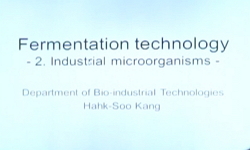본 연구에 사용한 홍차는 한국산 야부끼다종 차잎을 이용해 위조처리(withering) 유념처리(rolling, roll breaking) 및 발효처리(fermentation)를 거쳐 제조하였으며 홍차 제조 과정 중의 차잎에 포함되...
http://chineseinput.net/에서 pinyin(병음)방식으로 중국어를 변환할 수 있습니다.
변환된 중국어를 복사하여 사용하시면 됩니다.
- 中文 을 입력하시려면 zhongwen을 입력하시고 space를누르시면됩니다.
- 北京 을 입력하시려면 beijing을 입력하시고 space를 누르시면 됩니다.

한국산 야부끼다종 차엽으로 만든 홍차 제조과정 중의 catechins, theaflavins, alkaloids 함량 변화에 관한 연구 = Changes in the Composition of Catechins, Theaflavins and Alkaloids in Leaves from Korean Yabukida Tea Plant During Processing to Fermented Black Tea
한글로보기https://www.riss.kr/link?id=A76494850
- 저자
- 발행기관
- 학술지명
- 권호사항
-
발행연도
2009
-
작성언어
-
-
주제어
black tea ; alkaloids ; catechin ; theaflavin ; fermentation ; withering ; rolling
-
KDC
594
-
등재정보
KCI등재
-
자료형태
학술저널
- 발행기관 URL
-
수록면
308-314(7쪽)
-
KCI 피인용횟수
3
- DOI식별코드
- 제공처
-
0
상세조회 -
0
다운로드
부가정보
국문 초록 (Abstract)
본 연구에 사용한 홍차는 한국산 야부끼다종 차잎을 이용해 위조처리(withering) 유념처리(rolling, roll breaking) 및 발효처리(fermentation)를 거쳐 제조하였으며 홍차 제조 과정 중의 차잎에 포함되어 있는 catechin 및 theaflavin, alkaloid의 각 성분을 분석하고 최적의 홍차제조 조건을 조사한 것이다. 1) 생차잎의 수분함량의 평균은 70.85%였지만 최종단계의 홍차제품 수분함량은 3.07%로 생잎의 1/23로 감소하였다. 2) HPLC로 분석한 결과 차잎에는 7종류의 catechin, 4종류의 theaflavin 그리고 3종류의 alkaloid가 동정되었다. 3) 홍차의 제조과정 중의 catechin, theaflavin 및 alkaloid의 변동을 조사한 결과 발효과정 중에 EGCG, ECG, EGC, EC가 급격히 감소·변화하여 홍차의 특성을 결정하는 theaflavin이 생성됨을 알 수 있었다. 특히 발효가 시작되고 1~2시간 후에 theaflavin이 최대로 생성되는 것으로 보아 본 실험제조의 조건하에서는 발효처리를 1~2시간 하는 것이 최적의 홍차를 만드는 제조법이라 사료된다.
다국어 초록 (Multilingual Abstract)
In this study, we examined the composition of catechins, theaflavins and alkaloids in leaves during processing to fermented black tea, which is produced by withering, roll breaking, and fermentation of Korean Yabukida tea plant. In addition, we determ...
In this study, we examined the composition of catechins, theaflavins and alkaloids in leaves during processing to fermented black tea, which is produced by withering, roll breaking, and fermentation of Korean Yabukida tea plant. In addition, we determined the optimal conditions for the production of fermented black tea. The average moisture content in fresh leaves was 70.85%, which dropped to 3.07% in fermented black tea at the last stage of production. When the leaves were analyzed by HPLC, seven types of catechins, four types of theaflavins and three types of alkaloids were identified. The levels of catechins, theaflavins, and alkaloids were then evaluated after being processed into fermented tea. From these experiments, we found that the level of theaflavins, which determines the property of the tea, increased during fermentation. This effect resulted from the change in EGCG, ECG, EGC, EC during the process of fermentation. We also found that the maximal amount of theaflavins was created after 1-2 hours of fermentation. Thus, our results imply that the best condition for producing fermented black tea would be to ferment for 1-2 hours.
참고문헌 (Reference)
1 中莖秀夫, "茶樹の秋季整 枝葉の發酵加工について" 愛知食品工業技術センタ 1-4, 2002
2 Hollman PC, "Tea flavonols in cardiovascular disease and cancer epidemiology" 220 (220): 198-202, 1999
3 Higdon JV, "Tea catechins and polyphenols:health effects, metabolism, and antioxidant functions" 43 (43): 89-143, 2003
4 Inami S., "Tea catechin consumption reduces circulating oxidized low-density lipoprotein" 48 (48): 725-732, 2007
5 Borrelli F., "Systematic review: green tea and gastrointestinal cancer risk" 19 (19): 497-510, 2004
6 Liang YC, "Suppression of extracellular signals and cell proliferation by the black tea polyphenol, the aflavin-3,3'-digallate" 20 (20): 733-736, 1999
7 Friedman M., "Structure-activity relationships of tea compounds against human cancer cells" 55 (55): 243-253, 2007
8 Sano M., "Simultaneous determination of twelve tea catechins by high-performance liquid chromatography with electrochemical detection" 126 (126): 816-820, 2001
9 Zuo Y., "Simultaneous determination of catechins, caffeine and gallic acids in green, Oolong, black and pu-erh teas using HPLC with a photodiode array detector" 57 (57): 307-316, 2002
10 Patel R., "Polymeric black tea polyphenols inhibit mouse skin chemical carcinogenesis by decreasing cell proliferation" 41 (41): 532-553, 2008
1 中莖秀夫, "茶樹の秋季整 枝葉の發酵加工について" 愛知食品工業技術センタ 1-4, 2002
2 Hollman PC, "Tea flavonols in cardiovascular disease and cancer epidemiology" 220 (220): 198-202, 1999
3 Higdon JV, "Tea catechins and polyphenols:health effects, metabolism, and antioxidant functions" 43 (43): 89-143, 2003
4 Inami S., "Tea catechin consumption reduces circulating oxidized low-density lipoprotein" 48 (48): 725-732, 2007
5 Borrelli F., "Systematic review: green tea and gastrointestinal cancer risk" 19 (19): 497-510, 2004
6 Liang YC, "Suppression of extracellular signals and cell proliferation by the black tea polyphenol, the aflavin-3,3'-digallate" 20 (20): 733-736, 1999
7 Friedman M., "Structure-activity relationships of tea compounds against human cancer cells" 55 (55): 243-253, 2007
8 Sano M., "Simultaneous determination of twelve tea catechins by high-performance liquid chromatography with electrochemical detection" 126 (126): 816-820, 2001
9 Zuo Y., "Simultaneous determination of catechins, caffeine and gallic acids in green, Oolong, black and pu-erh teas using HPLC with a photodiode array detector" 57 (57): 307-316, 2002
10 Patel R., "Polymeric black tea polyphenols inhibit mouse skin chemical carcinogenesis by decreasing cell proliferation" 41 (41): 532-553, 2008
11 Friedman M., "Overview of antibacterial, antitoxin, antiviral, and antifungal activities of tea flavonoids and teas" 51 (51): 116-134, 2007
12 AOAC, "Methods of Analysis"
13 Tinahones FJ, "Green tea reduces LDL oxidability and improves vascular function" 27 (27): 209-213, 2008
14 Scalbert A., "Dietary polyphenols and the prevention of disease" 45 (45): 287-306, 2005
15 Cui Y., "Dietary flavonoidin take and lung cancer- Apopulation-based casecontrolstudy" 112 (112): 2241-2248, 2008
16 He Q., "Determination of total catechins in tea extracts by HPLC and spectrophotometry" 23 (23): 93-100, 2009
17 Kotani A., "Attomole catechins determination by capillary liquid chromatography with electrochemical detection" 23 (23): 157-163, 2007
18 Friedman M., "Antimicrobial activities of tea catechins and the aflavins and tea extracts against Bacilluscereus" 69 (69): 354-361, 2006
19 Tanaka T., "Accumulation of epigallocatechin quinone dimers during tea fermentation and formation of theasinensins" 65 (65): 1582-1587, 2002
20 Tanaka T., "A novel black tea pigment and two new oxidation products of epigallocatechin-3-O-gallate" 53 (53): 7571-7578, 2005
동일학술지(권/호) 다른 논문
-
충청북도지역 보육시설의 학부모대상 급식서비스 현황과 품질 만족도
- 한국식생활문화학회
- 최은숙 ( Eun Sook Choe )
- 2009
- KCI등재
-
막걸리박 열수추출물 첨가 식이가 선천성 고혈압쥐(SHR)의 혈압 저하에 미치는 영향
- 한국식생활문화학회
- 이현숙 ( Hyun Sook Lee )
- 2009
- KCI등재
-
전주지역 음식점의 김치, 국,찌개의 염도와 운영자의 염분 기호도 및 인식 조사
- 한국식생활문화학회
- 이경자 ( Kyung Ja Lee )
- 2009
- KCI등재
-
- 한국식생활문화학회
- 이현숙 ( Hyun Sook Lee )
- 2009
- KCI등재
분석정보
인용정보 인용지수 설명보기
학술지 이력
| 연월일 | 이력구분 | 이력상세 | 등재구분 |
|---|---|---|---|
| 2026 | 평가예정 | 재인증평가 신청대상 (재인증) | |
| 2020-01-01 | 평가 | 등재학술지 유지 (재인증) |  |
| 2017-01-01 | 평가 | 등재학술지 유지 (계속평가) |  |
| 2014-12-16 | 학술지명변경 | 외국어명 : Journal of The Korean Society of Dietary Culture -> Journal of The Korean Society of Food Culture |  |
| 2013-01-01 | 평가 | 등재 1차 FAIL (등재유지) |  |
| 2010-01-01 | 평가 | 등재학술지 유지 (등재유지) |  |
| 2008-01-01 | 평가 | 등재학술지 유지 (등재유지) |  |
| 2005-01-01 | 평가 | 등재학술지 선정 (등재후보2차) |  |
| 2004-01-01 | 평가 | 등재후보 1차 PASS (등재후보1차) |  |
| 2003-01-01 | 평가 | 등재후보 1차 FAIL (등재후보1차) |  |
| 2002-01-01 | 평가 | 등재후보학술지 유지 (등재후보1차) |  |
| 2000-07-01 | 평가 | 등재후보학술지 선정 (신규평가) |  |
학술지 인용정보
| 기준연도 | WOS-KCI 통합IF(2년) | KCIF(2년) | KCIF(3년) |
|---|---|---|---|
| 2016 | 0.8 | 0.8 | 0.87 |
| KCIF(4년) | KCIF(5년) | 중심성지수(3년) | 즉시성지수 |
| 0.87 | 0.89 | 1.461 | 0.11 |





 ScienceON
ScienceON




